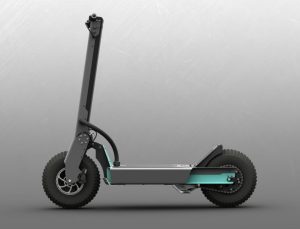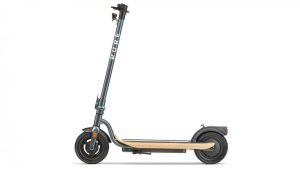Electric scooters cost more due to advanced technology and significant R&D investment.
The Technology Behind Electric Scooters
Electric scooters have become a staple in urban transportation, combining cutting-edge technology with efficiency and convenience. They incorporate advanced engineering to offer a clean, green alternative to fossil fuel-based vehicles. We will delve into the critical technological aspects that set electric scooters apart and contribute to their higher price point.
Battery Innovation and Costs
The battery is the heart of an electric scooter, providing the necessary power for propulsion. Modern electric scooters often use lithium-ion batteries, which are lighter and have a higher energy density compared to older battery types like lead-acid. The cost of these batteries reflects their sophistication. A high-quality lithium-ion battery can constitute up to 40% of the scooter’s total cost. It delivers a substantial range of 20-40 miles on a single charge with a lifecycle that spans several years, assuming a daily use scenario. These batteries also recharge relatively quickly, taking anywhere from 3 to 8 hours to reach full capacity, thus offering both convenience and efficiency. The production of lithium-ion batteries demands precision, high-quality materials, and considerable R&D investment, which drives up their price.
Electric Motor Technology
The electric motor converts electrical energy from the battery into mechanical energy to turn the wheels. Scooters generally use either brushed or brushless DC motors. The more efficient brushless motors are typically favored for their reliability and longer lifespan, often lasting the entire lifetime of the scooter without needing replacement. A powerful electric motor can deliver up to 500 watts of power, enabling the scooter to reach speeds of 15 to 25 mph, a feature especially important for commuting purposes. These motors also contribute to the vehicle’s cost due to their complex manufacturing process and the high-quality components required.
Regenerative Braking Systems
Regenerative braking is a remarkable feature in electric scooters that not only slows the vehicle down but also recaptures energy to recharge the battery. When the rider applies the brakes, instead of solely using friction to slow down, the motor operates in reverse to generate electricity. This technology not only increases efficiency but also extends the range of the scooter. Although regenerative braking systems add to the overall cost, they provide significant long-term savings by reducing the need for frequent battery charges and prolonging battery life.
Smart Features and Connectivity
Smart connectivity in electric scooters offers riders a wealth of information and control, adding to the user experience and safety. Features like GPS tracking, anti-theft systems, mobile app integration, and real-time diagnostics are common in high-end models. These smart capabilities require additional hardware and software components, which add to the manufacturing expenses. For instance, a scooter with GPS and Bluetooth capabilities can facilitate route planning and scooter sharing, thereby adding more value despite the increased initial cost. The integration of these technologies also demands additional R&D and constant updates, which contribute to the price tag.
Manufacturing and Production Costs
The production of electric scooters involves a complex chain of processes, each adding to the final cost of the scooters. These costs reflect the price of raw materials, labor, quality control, and the economies of scale that manufacturers can achieve.
Materials Used in Electric Scooters
Manufacturers choose materials for electric scooters based on their strength-to-weight ratio, durability, and cost-effectiveness. Aluminum is a popular choice for frames due to its light weight and corrosion resistance. It provides the necessary sturdiness without adding significant weight, which is essential for maintaining a scooter’s energy efficiency and portability. High-end models may use carbon fiber, which offers a superior strength-to-weight ratio but comes at a higher cost, typically increasing the retail price by several hundred dollars.
The batteries, typically lithium-ion, are another major cost factor, with prices depending on the capacity and quality. For a standard electric scooter, the battery alone can cost between $100 to $300. Electric motors, another crucial component, can vary in price, with more powerful and efficient motors, like a 250-watt brushless DC motor, costing upwards of $150.
Labor and Assembly Processes
The assembly of electric scooters requires both automated processes and skilled labor. Workers assemble various components such as the motor, battery, control systems, and the frame. Depending on the complexity of the design, it can take several hours to assemble a single scooter. Labor costs can significantly affect the final price, especially for companies that manufacture in regions with higher wages. Moreover, the precision required in assembling electric scooters adds to labor costs, as it requires a workforce with specialized skills.
Quality Control and Safety Standards
Quality control ensures that the electric scooters meet certain safety and performance standards before they hit the market. Each scooter undergoes multiple inspections and tests to check for defects and performance issues. The incorporation of advanced safety features like LED lighting, electronic brakes, and stability control also entails additional testing, which increases the production time and cost. Complying with various international safety standards like CE, UL, or ISO certifications, can add a considerable amount to the overall cost. Manufacturers may spend anywhere from $10,000 to $50,000 to certify a new scooter model.
Economies of Scale
Economies of scale play a significant role in the pricing of electric scooters. Mass production typically lowers the cost per unit due to the spread of fixed costs over a larger number of units and negotiated discounts for bulk material purchases. Small manufacturers may struggle to achieve these economies, resulting in higher costs. For instance, a manufacturer producing 10,000 units per year can spread the fixed costs more effectively than a manufacturer producing only 1,000 units, potentially reducing the cost by 20-30%.
Research and Development (R&D)
Investment in Research and Development is crucial for the advancement and proliferation of electric scooters. Companies not only strive to enhance the performance and efficiency of existing models but also aim to introduce groundbreaking features that set new industry standards.
Investment in R&D for Performance Improvements
Funds directed towards R&D result in performance enhancements such as increased power output, extended battery life, and improved overall efficiency. For instance, investing in the development of a new powertrain can increase an electric scooter’s power output from 250 watts to 350 watts, thereby boosting its speed and climbing capabilities. These performance improvements often require substantial financial input, with leading companies spending millions annually. A significant portion of the budget, sometimes as high as 5-7% of the company’s revenues, goes into R&D for these advancements.
Design Innovations
The design aspect covers everything from the ergonomics of the scooter to its aesthetic appeal and functional layout. Innovation in design can lead to a more compact folding mechanism, reducing the folded dimensions from an average of 49x15x19 inches to a more portable 45x12x16 inches, making the scooter more convenient to carry and store. Companies invest in design software, 3D printing, and prototype testing to refine these features. The cost of designing and testing a new folding mechanism can exceed $100,000, factoring in the man-hours, materials, and tooling required.
Future Technologies in Electric Scooters
Looking towards the future, companies invest in technologies that may redefine the utility and functionality of electric scooters. This could include the integration of solar charging panels, smart tire technology that adapts to road conditions, or even advanced navigation systems. These futuristic technologies are the result of continuous R&D efforts. For example, developing solar charging capability for an electric scooter could involve an additional $50,000 to $200,000 investment in R&D, depending on the complexity and the scale of the project.
Electric scooter companies also allocate funds to study and adopt upcoming materials that could revolutionize the industry, such as graphene batteries. Although more expensive—with R&D costs that can run into several hundred thousand dollars—graphene batteries could potentially double the range of electric scooters while cutting charging time in half.
Infrastructure and Supply Chain
The intricate network that forms the global supply chain for electric scooters is a major contributor to their final pricing. It encompasses the sourcing of raw materials, manufacturing components, assembly, and delivery of the finished product to consumers.
The Impact of Global Supply Chains on Pricing
Electric scooter companies often source components from various countries to leverage cost advantages. For example, lithium for batteries may come from South America, while high-quality aluminum for frames might be sourced from suppliers in Asia. This global sourcing can lead to complexity in logistics and a susceptibility to fluctuations in currency exchange rates, both of which can add to costs. A sudden increase in the price of lithium due to geopolitical issues could increase the cost of the battery by 10-15%. Similarly, disruptions in the supply chain can lead to a scarcity of materials, which might hike prices temporarily. These cost variances ultimately impact the retail price of electric scooters.
Shipping and Logistics Costs
Transporting components and finished products across the globe incurs substantial costs. The shipping cost for an electric scooter from the manufacturing site in Asia to markets in North America or Europe can range from $10 to $50 per unit, depending on the volume and shipping method. Moreover, logistics costs have been rising due to increased fuel prices and demand for shipping services, pushing the final price of scooters upward.
Tariffs and Import Duties
Tariffs and import duties are a significant factor in the cost of electric scooters. Importing scooters into the United States from China, for instance, might attract a tariff that ranges from 15% to 25%. This directly adds to the cost; for a scooter priced at $500, tariffs can increase its landing price by $75 to $125. Companies must either absorb these costs or pass them on to consumers, often resulting in higher retail prices.




